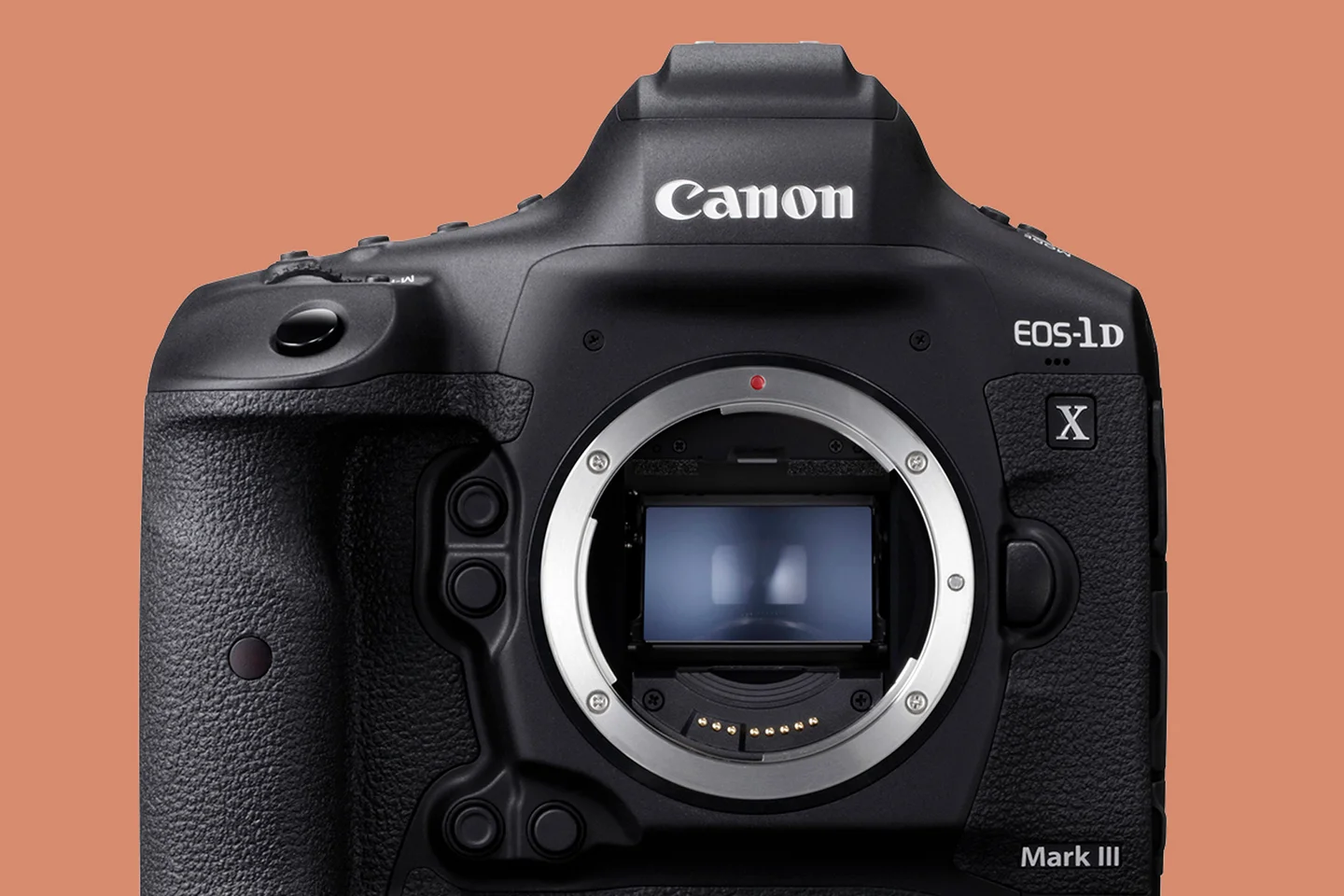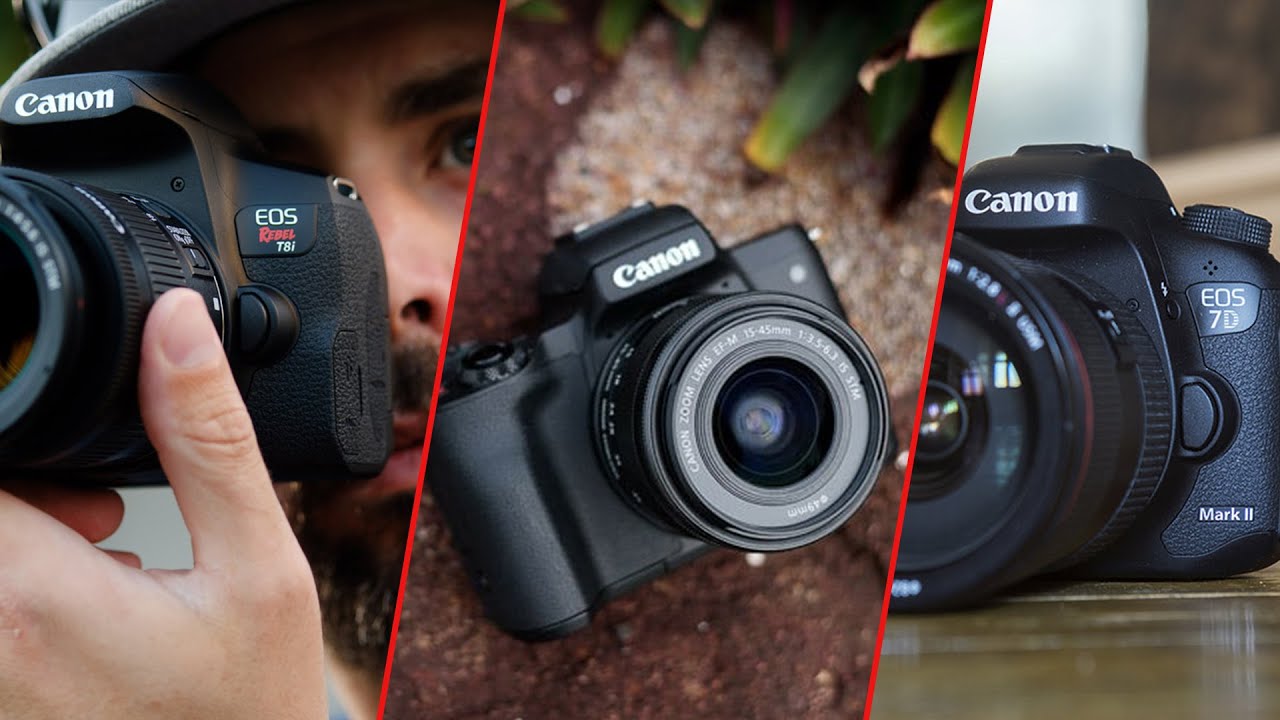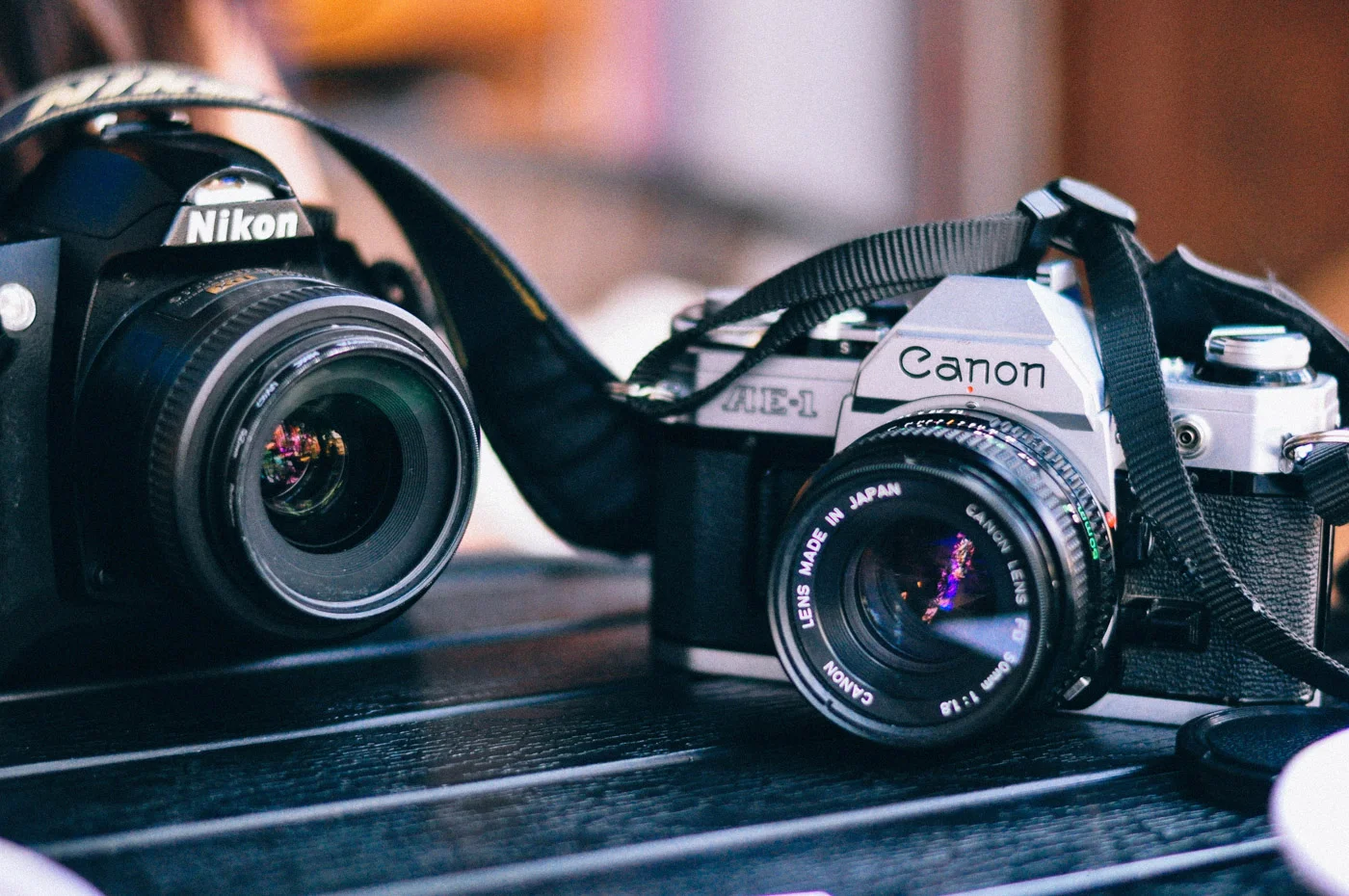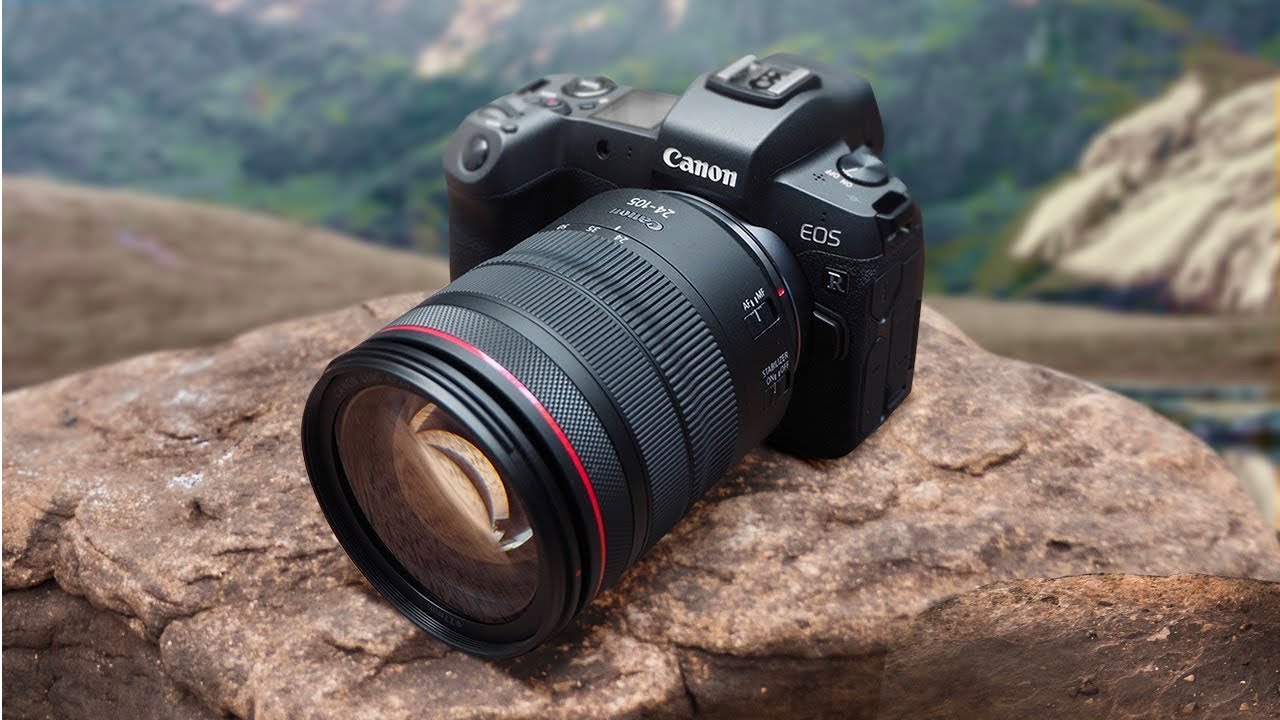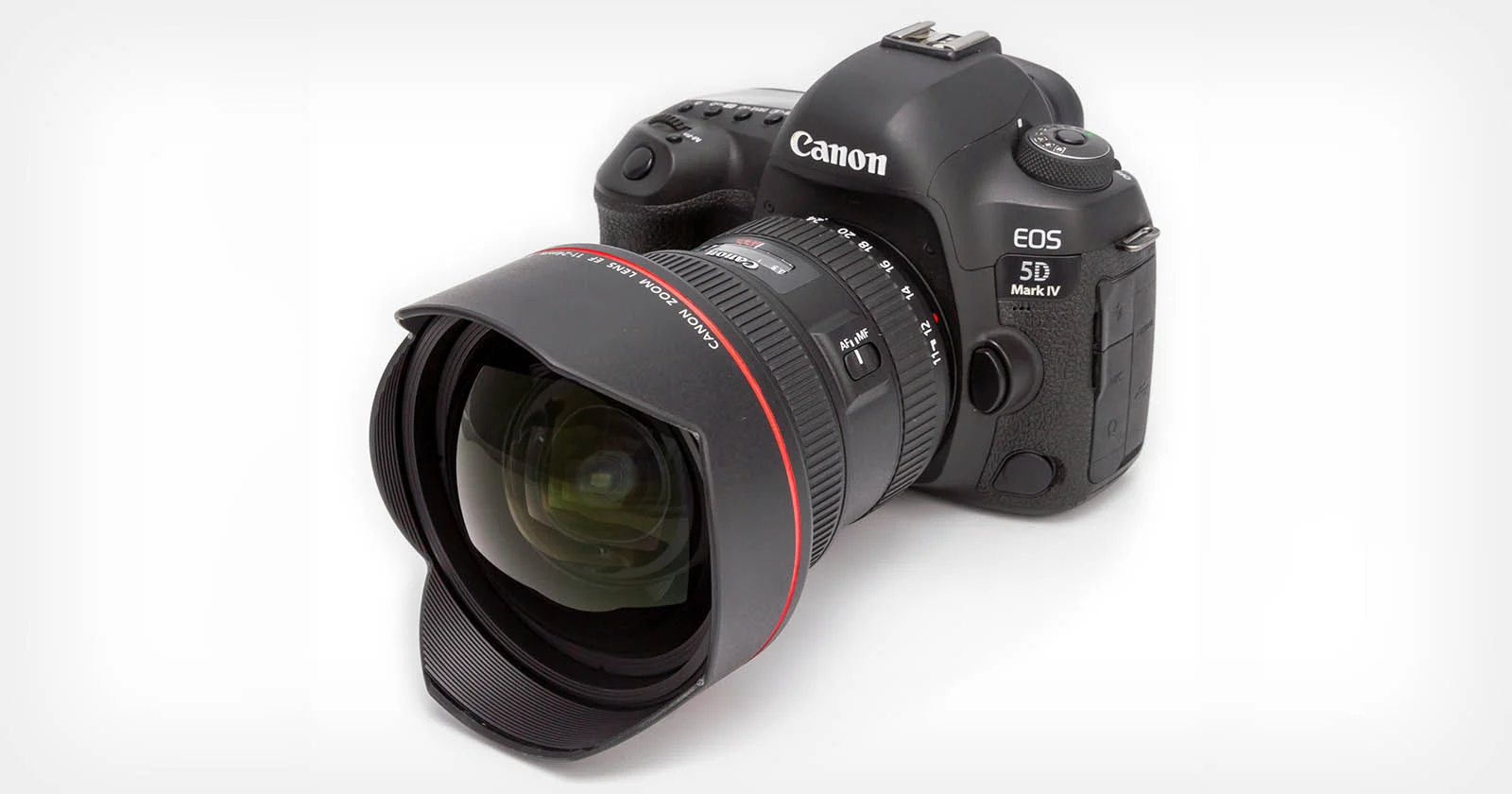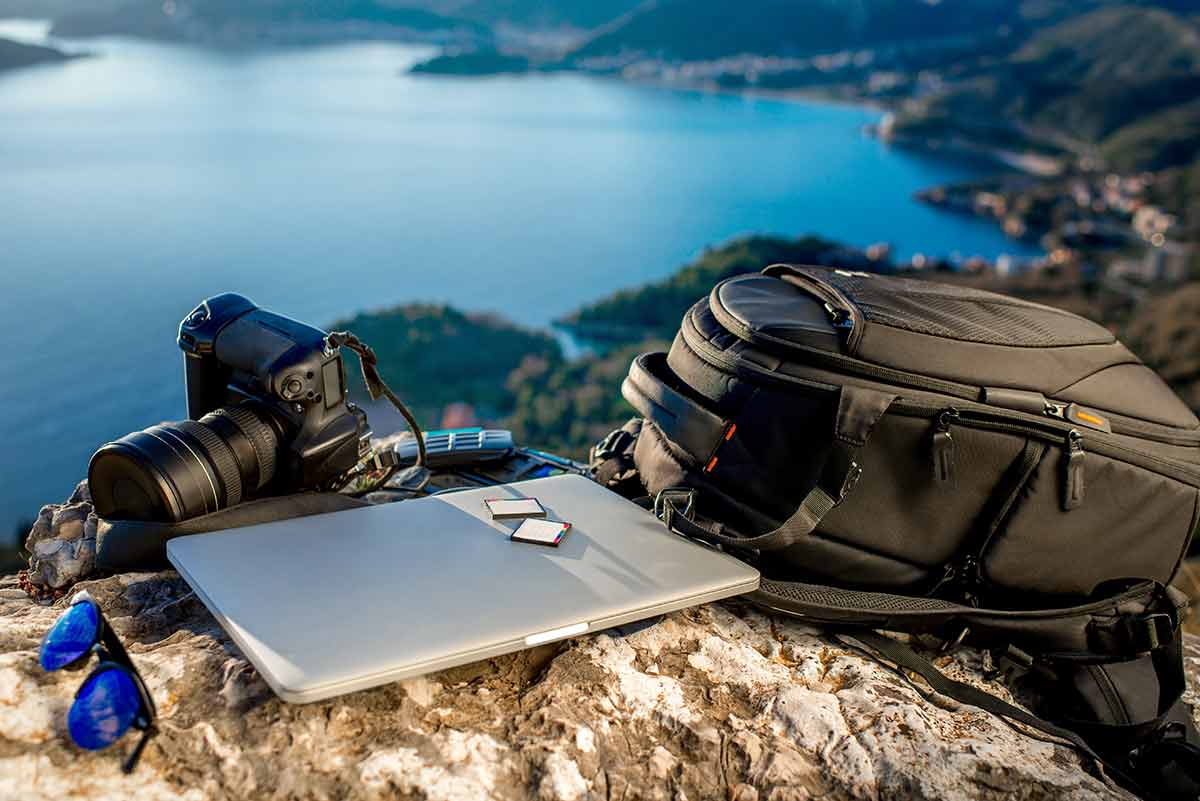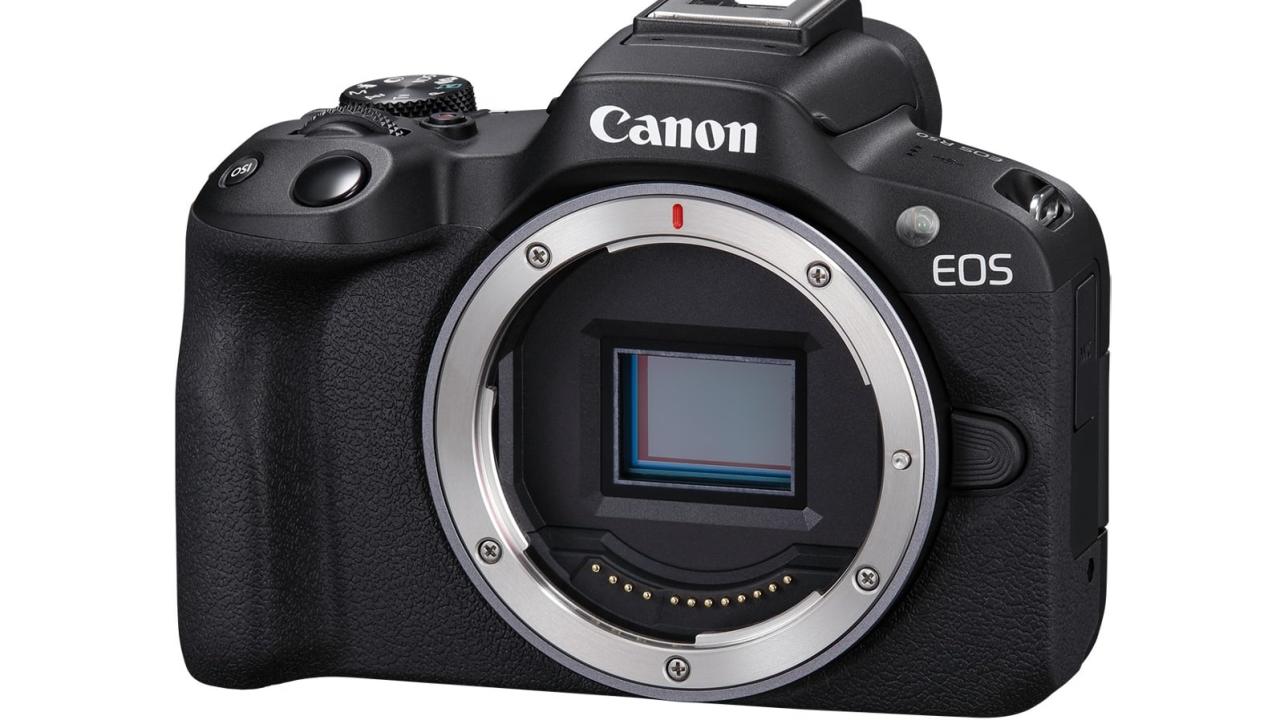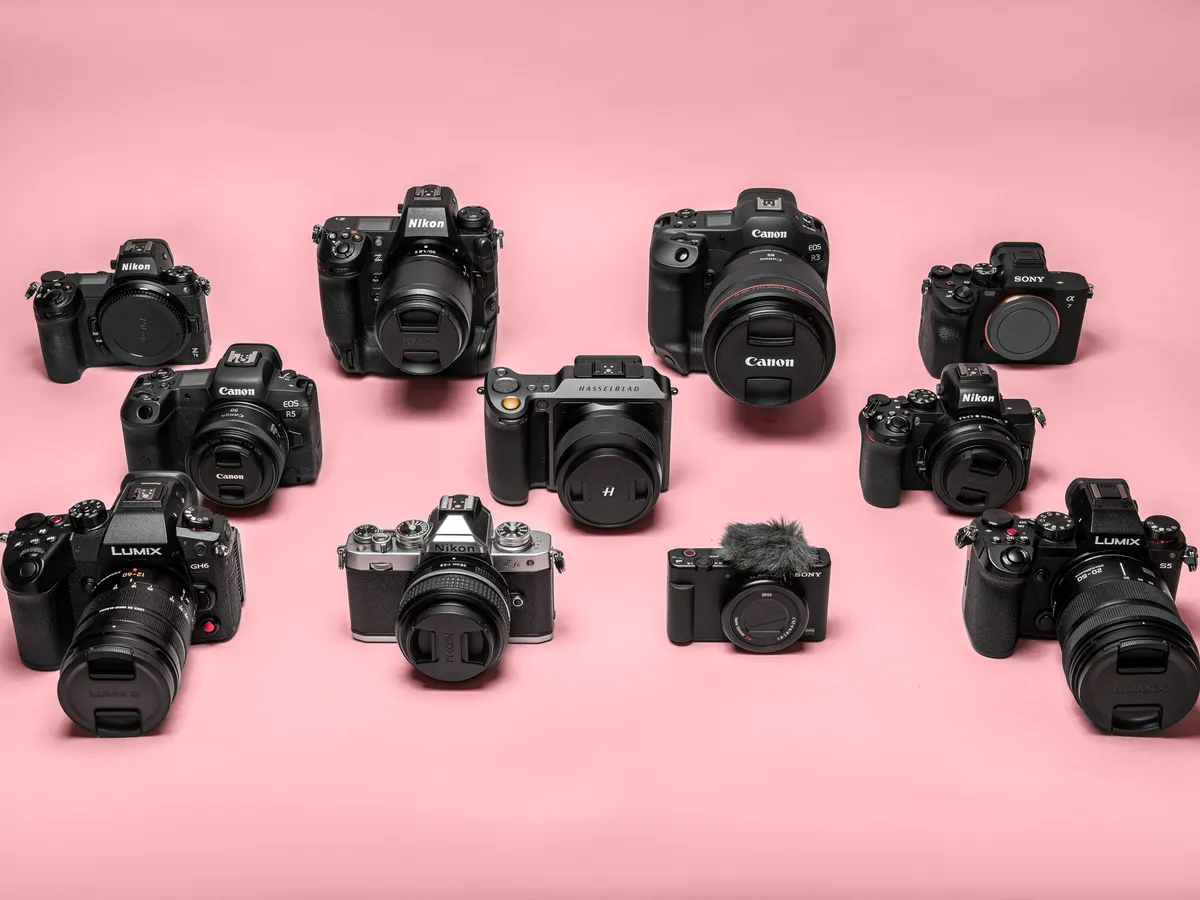Introduction
Welcome to the digital age of photography, where the landscape of capturing stunning images has transformed with the advent of SLR digital cameras. These powerful devices have become a favorite among professional photographers and enthusiasts alike, offering unparalleled image quality, versatility, and creative control. If you’re in the market for an SLR digital camera, there are several key features to consider that will help you make an informed buying decision.
Choosing the right SLR digital camera requires careful consideration of various factors, including sensor size and resolution, ISO range, autofocus system, image stabilization, burst mode, video recording capabilities, lens compatibility, viewfinder options, LCD screen functionality, connectivity options, battery life, size and weight, as well as your budget.
When it comes to sensor size and resolution, it’s crucial to understand that larger sensors generally produce higher image quality and better low-light performance. Ultra-high resolution sensors provide sharpness and detail, but they can also result in larger file sizes. Consider your desired output and the amount of post-processing you intend to do when selecting a camera with the appropriate resolution.
The ISO range and low-light performance play a vital role in capturing stunning images in challenging lighting situations. A wider ISO range allows you to photograph in low-light conditions without sacrificing image quality, while advanced noise reduction technology helps to maintain clarity and minimize noise.
The autofocus system is another critical factor to consider. Look for a camera with a fast and accurate autofocus system that provides a wide coverage area, allowing you to capture sharp images of moving subjects with ease.
Image stabilization is essential for achieving sharp images, especially when shooting handheld or in low-light conditions. Look for in-body image stabilization or lenses with built-in optical stabilization to counteract camera shake and produce clear and steady shots.
Burst mode and continuous shooting capability come in handy when capturing fast-moving subjects or fleeting moments. A camera with a high burst rate and ample buffer capacity allows you to fire off a rapid sequence of shots, increasing your chances of capturing the perfect moment.
Video recording features have become increasingly important in SLR digital cameras. Look for cameras that offer high-resolution video recording, options for manual control over exposure settings, and the ability to connect an external microphone for enhanced audio quality.
Lens compatibility and interchangeability are significant advantages of SLR systems. Consider the availability and diversity of lenses offered by the camera manufacturer, as well as compatibility with third-party lens manufacturers, to expand your creative possibilities.
The viewfinder is a crucial tool for composing your images accurately. Optical viewfinders provide a true-to-life representation of the scene, while electronic viewfinders offer additional information overlays and real-time exposure preview. Choose a camera with the viewfinder option that suits your shooting style and preferences.
The LCD screen is another crucial element to consider. Look for a camera with a large and high-resolution screen that offers adjustable brightness and color accuracy. Touchscreen functionality can provide convenience and ease of use, especially when navigating menus and reviewing images.
Connectivity options such as Wi-Fi, Bluetooth, and NFC allow for seamless transfer of images to your smartphone, tablet, or computer, enabling instant sharing on social media or remote control of your camera.
Battery life is a vital consideration, especially if you plan on extended shooting sessions or traveling without easy access to charging facilities. Look for a camera with a long battery life or the option to use a battery grip for extended power.
Size and weight are important factors to consider, especially if you plan on carrying your camera with you for extended periods. Consider your shooting style and the portability requirements when selecting a camera that fits comfortably in your hands and bag.
Finally, your budget is an essential factor in choosing the right SLR digital camera. Set a realistic budget and explore the options within that range that meet your specific needs and requirements.
With a solid understanding of these features, you are well-equipped to find the perfect SLR digital camera that suits your photography style and preferences. In the following sections, we will delve deeper into each of these features, providing you with the necessary information to make an informed decision.
Sensor Size and Resolution
The sensor size and resolution are crucial factors to consider when choosing an SLR digital camera. The sensor is the component that captures light and converts it into an image. Larger sensors generally deliver superior image quality, especially in low-light conditions, and offer better dynamic range and improved color reproduction.
Full-frame sensors, which are equivalent in size to 35mm film, provide the highest image quality and are preferred by professional photographers. They offer better control over depth of field and low-light performance, making them ideal for landscape, portrait, and low-light photography.
APS-C (Advanced Photo System type-C) sensors, also known as crop sensors, are smaller than full-frame sensors but still offer excellent image quality. They are found in many mid-range and entry-level SLR cameras and can provide a cost-effective alternative to full-frame cameras. With a crop factor of 1.5x or 1.6x, these sensors effectively increase the focal length of the lens, giving you extra reach when shooting telephoto subjects.
When it comes to resolution, higher megapixels can result in greater detail and the ability to enlarge and crop images without loss of quality. However, it’s important to strike a balance between resolution and file size. Larger files can fill up memory cards quickly and may require more post-processing power.
For most photographers, a camera with a resolution between 20-30 megapixels is more than sufficient for everyday shooting. If you plan on printing large format prints or require extreme pixel-level detail, consider opting for a higher resolution camera.
It’s important to note that while megapixel count is one aspect of image quality, factors such as sensor technology, dynamic range, and noise control also play a significant role. Therefore, don’t solely rely on megapixels as the sole determining factor for image quality.
When deciding on the appropriate sensor size and resolution, consider your shooting style, intended use of the photographs, and budget. If you prioritize ultimate image quality and have the budget, a full-frame camera may be the way to go. However, if budget constraints are a concern, an APS-C camera with a higher megapixel count may provide a good balance between image quality and affordability.
Ultimately, the sensor size and resolution of your SLR digital camera will greatly impact your photography results. Take the time to research and understand your specific needs and choose a camera that offers the right balance of sensor size and resolution for your style of photography.
ISO Range and Low Light Performance
When it comes to capturing stunning images in challenging lighting conditions, the ISO range and low light performance of an SLR digital camera are crucial considerations. ISO refers to the sensitivity of the camera’s sensor to light. Higher ISO settings allow for faster shutter speeds and the ability to shoot in dimly lit environments without compromising image quality.
An SLR camera with a wide ISO range provides more flexibility in various lighting conditions. Look for a camera that offers a native ISO range of at least 100 to 12800 or higher. Some advanced cameras even have extended ISO settings that can go up to 25600 or beyond.
Low light performance is determined by how well a camera can handle noise at high ISO settings. Noise refers to the grain-like artifacts that can degrade image quality. A camera with good low light performance will produce clean and usable images even at higher ISO settings.
The sensor size and technology used in the camera play a significant role in low light performance. Full-frame sensors generally have larger pixels, which can capture more light and result in cleaner images at high ISO settings. However, newer APS-C sensors are also improving in low light performance and can deliver impressive results.
When comparing ISO performance, it’s essential to consider noise reduction algorithms employed by the camera. Some cameras offer customizable noise reduction settings, allowing you to balance noise reduction with retaining fine details in your images. Additionally, newer cameras may have advanced noise reduction technology or in-camera noise reduction settings that can further enhance image quality in low light situations.
It’s important to note that the overall performance at higher ISO settings can vary between camera models and brands. Therefore, it’s advisable to check sample images and read reviews to get an accurate idea of a camera’s low light capabilities.
While a wider ISO range and good low light performance are significant advantages, it’s essential to strike a balance. Using extremely high ISO settings can still result in some loss of image quality, including reduced dynamic range and increased noise. Therefore, it’s advisable to try to shoot at the lowest ISO setting possible for the given lighting conditions to achieve the best image quality.
Understanding the ISO range and low light performance of an SLR digital camera is crucial for photographers who frequently shoot in challenging lighting conditions or in situations where flash photography is not permitted. By selecting a camera with a wide ISO range and good low light performance, you can capture high-quality images even in dimly lit environments, opening up new creative possibilities for your photography.
Autofocus System
The autofocus system of an SLR digital camera is a critical feature that greatly influences the speed and accuracy of focusing. It ensures that your images are sharp and in focus, especially when capturing moving subjects or shooting in challenging conditions.
When evaluating the autofocus system of a camera, consider factors such as the number of autofocus points, their distribution across the frame, and the type of autofocus technology used.
The number of autofocus points determines how many areas of the frame can be used for focusing. Cameras with a larger number of autofocus points provide more flexibility in composition and allow for greater precision in focusing on your subject. Some advanced cameras feature hundreds of autofocus points, with a wide coverage area that spans the entire frame.
The distribution of autofocus points across the frame is also crucial. Look for cameras that offer autofocus points spread both horizontally and vertically, allowing you to focus on subjects that are not in the center of the frame. This ensures greater accuracy and versatility in composition, particularly for off-center subjects.
Another consideration is the autofocus technology used in the camera. There are two main types: phase detection autofocus (PDAF) and contrast detection autofocus (CDAF).
Phase detection autofocus utilizes dedicated autofocus sensors within the camera that measure the difference in phase between incoming light rays. This type of autofocus is fast and precise, making it ideal for capturing moving subjects or shooting in conditions with limited contrast.
Contrast detection autofocus, on the other hand, uses the camera’s image sensor to analyze contrast variations in the scene. It is typically slower than phase detection autofocus but offers greater accuracy when it comes to focusing on details or stationary subjects.
Many cameras now feature hybrid autofocus systems that combine both phase detection and contrast detection technologies. This allows for faster and more accurate focusing across a variety of shooting conditions, making it an excellent choice for photographers who require versatility in their autofocus capabilities.
When selecting a camera, consider your specific photography needs. If you shoot sports, wildlife, or fast-moving subjects, a camera with a fast and accurate autofocus system is crucial to capturing the action. For portrait or landscape photographers, a camera with precise and flexible autofocus points throughout the frame can greatly assist in achieving desired results.
It’s worth noting that different camera models and brands may have varying autofocus technologies and performance. It’s always advisable to test and compare autofocus capabilities, read reviews, and consider sample images to determine which camera best suits your autofocus requirements.
Understanding the autofocus system of an SLR digital camera is vital for achieving sharp and properly focused images. By choosing a camera with a capable autofocus system that aligns with your photography needs, you can capture stunning, crystal-clear images with ease and confidence.
Image Stabilization
Image stabilization is an essential feature to consider when choosing an SLR digital camera, as it helps to minimize camera shake and produce sharp, steady images. It compensates for small movements of the camera during handheld shooting, resulting in sharper photos, especially in low light or when using longer focal lengths.
There are two main types of image stabilization: in-body image stabilization and lens-based optical stabilization.
In-body image stabilization is a system where the stabilization mechanism is built into the camera body itself. This allows all lenses attached to the camera to benefit from image stabilization, regardless of whether the lens has its own stabilization system or not. In-body image stabilization provides flexibility and cost-effectiveness since it eliminates the need to purchase stabilized lenses.
Lens-based optical stabilization, on the other hand, incorporates stabilization technology directly into compatible lenses. This system detects and compensates for camera shake by moving lens elements to counteract the movement. Lens-based stabilization tends to be more effective when shooting with longer focal lengths and during panning shots.
Both in-body and lens-based stabilization systems have their advantages and limitations. In-body image stabilization provides stabilization benefits with any lens attached, including older or third-party lenses that may not have built-in stabilization. However, the effectiveness of in-body stabilization may vary depending on the lens used.
Lens-based optical stabilization, on the other hand, can provide more precise stabilization tailored to the specific characteristics of the lens. This is particularly advantageous for telephoto lenses or when shooting in specific scenarios that require precise stabilization control.
When selecting a camera, consider your shooting style and the lenses you plan to use. If you primarily shoot with a wide range of lenses, in-body image stabilization may be a more versatile option. On the other hand, if you predominantly use lenses with built-in stabilization or larger telephoto lenses, lens-based optical stabilization may provide more effective performance.
It’s worth noting that image stabilization systems vary in their effectiveness and performance across different camera models and brands. It’s advisable to research and compare sample images and reviews to get a better understanding of how well a specific camera’s image stabilization system performs in real-world shooting conditions.
Image stabilization is particularly beneficial for handheld photography and situations where using a tripod is not practical or allowed. Whether you’re capturing landscapes, portraits, or action shots, image stabilization can help you achieve sharper images and expand your creative possibilities.
By selecting a camera with a capable image stabilization system that aligns with your shooting needs, you can enhance the sharpness and quality of your images, ultimately resulting in more satisfying and professional-looking photographs.
Burst Mode and Continuous Shooting
When it comes to capturing fast-paced action or decisive moments, the burst mode and continuous shooting capabilities of an SLR digital camera can be game-changers. These features allow you to capture a rapid sequence of images, increasing your chances of capturing the perfect moment.
Burst mode refers to the camera’s ability to take multiple photos in quick succession with just a single press of the shutter button. This mode is particularly useful in sports photography, wildlife photography, or any situation where subjects are in motion. It allows you to capture a series of frames in a short amount of time, ensuring that you don’t miss the critical moment.
The burst rate or frames per second (fps) indicates how many images the camera can capture in a second. Higher burst rates are desirable for capturing fast-moving subjects, as they provide more opportunities to select the perfect shot from the sequence. Professional-grade cameras often offer burst rates of 10 frames per second or higher, while entry-level models may have slower burst rates.
Continuous shooting is another valuable feature that allows you to hold down the shutter button and capture a continuous stream of images. This mode is ideal for situations where you need a longer burst of shots, such as when photographing a fast-paced event or capturing a series of expressions during a portrait session.
When considering burst mode and continuous shooting capabilities, it’s essential to consider the buffer capacity of the camera. The buffer is temporary storage where the camera stores the photos before writing them to the memory card. A larger buffer capacity allows you to capture more images in quick succession before the camera slows down due to the writing speed of the memory card. Cameras with larger buffers can capture longer burst sequences without interruption.
Fast memory cards also play a crucial role in burst mode and continuous shooting performance. Look for memory cards with high write speeds, such as UHS-II or V90 cards, to ensure that the camera can handle the high data transfer rate needed for continuous shooting without buffering or slowing down.
While burst mode and continuous shooting capabilities are particularly useful in certain genres of photography, they can also be advantageous in everyday shooting scenarios. They provide the ability to choose the perfect expression in portraits, capture split-second moments during street photography, or freeze action in creatively dynamic ways.
It’s worth noting that burst mode and continuous shooting capabilities can vary across different camera models and brands. Consider your specific needs and shooting style to determine the required burst rate and buffer capacity for your desired photography genres.
Understanding and utilizing burst mode and continuous shooting effectively can help take your photography to the next level, enhancing your ability to capture fast-moving subjects and fleeting moments. By selecting a camera with a suitable burst rate and buffer capacity, you can increase your chances of capturing the perfect shot in any dynamic or action-packed situation.
Video Recording Features
With the increasing popularity of video content creation, the video recording capabilities of an SLR digital camera have become an important consideration for many photographers. Whether you’re a vlogger, filmmaker, or simply enjoy capturing high-quality videos, the following features are worth considering when choosing a camera for video recording.
First and foremost, resolution is a key factor to consider. Many modern SLR cameras offer 4K video recording, which provides exceptional detail and sharpness. 4K resolution is especially valuable if you plan on displaying your videos on large screens or if you require the ability to crop or zoom into footage while maintaining high quality.
Along with resolution, consider the frame rate options available in the camera. Higher frame rates, such as 60fps or even 120fps, enable smoother and more fluid motion in videos, making them ideal for capturing fast-paced action or achieving slow-motion effects during post-production. Lower frame rates, such as 24fps, offer a cinematic look and are commonly used for filmmaking.
Another crucial consideration is the ability to manually control exposure settings during video recording. Look for a camera that offers manual exposure controls, including aperture, shutter speed, and ISO, allowing you to have complete control over the look and feel of your videos. This feature is essential for consistent and professional-looking footage, especially in challenging lighting conditions.
Audio quality is equally important in video recording. Cameras with a microphone input jack allow you to connect an external microphone for high-quality audio capture, reducing background noise and improving overall sound clarity. Look for cameras that offer options for adjusting audio levels or even have built-in audio meters for monitoring audio levels during recording.
When it comes to focusing during video recording, consider a camera with features such as autofocus with face and eye detection. This ensures that your subjects remain in focus throughout the video, even when they are moving or if the camera position changes. Some cameras also offer focus peaking or manual focus assist features, which can be beneficial for more precise manual focus control when desired.
Stabilization is another critical feature to look for in video recording. While optical or in-body stabilization systems can help reduce camera shake, some cameras also offer electronic image stabilization (EIS) or digital stabilization. These features further enhance the stability of your footage, resulting in smoother videos, especially when shooting handheld or in motion.
Connectivity options are worth considering if you plan to transfer your videos wirelessly or control your camera remotely. Wi-Fi, Bluetooth, or NFC capabilities in the camera allow for seamless sharing of videos to smartphones or tablets, as well as control over camera settings and recording remotely.
Understanding your specific video recording needs, such as intended use and desired output quality, will guide you in choosing a camera with the right video recording features. Whether you aspire to create professional-quality videos or simply want to capture memorable moments in high resolution, selecting a camera that offers excellent video recording capabilities can enhance your storytelling capabilities and elevate your video content.
Lens Compatibility and Interchangeability
One of the significant advantages of SLR digital cameras is the ability to interchange lenses, providing unparalleled flexibility and creative possibilities. When considering a camera, it’s essential to assess the lens compatibility and interchangeability options to ensure compatibility with your shooting needs and future growth as a photographer.
First and foremost, check the lens mount of the camera. Different camera manufacturers have their own lens mount systems, such as Canon’s EF mount or Nikon’s F-mount. Ensure that the camera you choose has a lens mount that is widely supported, as this will provide you with access to a vast range of lenses from both the camera manufacturer and third-party lens makers.
Consider the availability and diversity of lenses offered by the camera manufacturer. The more extensive the lens lineup, the greater the variety of focal lengths, apertures, and specialized lenses available to you. Popular lenses include wide-angle lenses for landscapes, telephoto lenses for wildlife or sports photography, and prime lenses for portraits.
Compatibility with third-party lens manufacturers is also important to consider. Companies such as Sigma, Tamron, and Tokina produce lenses that are compatible with various camera systems, providing additional options at different price points. Ensure that the camera you choose allows for seamless integration with third-party lenses, as this can significantly expand your lens choices and potentially save you money.
Before making a purchase, research the specific lens options available for the camera you’re considering. Look for lenses that fit your shooting style, offer the desired focal lengths, aperture ranges, and specialized features that you may require.
In addition to lens compatibility, consider the image stabilization systems available in the lenses you plan to use. Some lenses have built-in optical stabilization, which compensates for camera shake, while others rely on the camera’s in-body stabilization system. Confirm that the camera and lenses you select have compatible stabilization mechanisms to ensure the best results.
It’s worth noting that lens compatibility and interchangeability are typically limited to cameras within the same manufacturer’s system. Switching camera systems may require purchasing new lenses, which can be a considerable investment. Therefore, it’s important to carefully consider your long-term goals and shooting needs when selecting a camera system.
Understanding lens compatibility and interchangeability when choosing an SLR digital camera is essential for building a versatile and adaptable photography system. By selecting a camera with a compatible lens mount, extensive lens options, and compatibility with third-party lenses, you’ll have the flexibility to explore various genres of photography and continuously expand your creative possibilities.
Viewfinder Options
The viewfinder is an essential component of an SLR digital camera that aids in composing accurate and precise images. It allows you to frame your shot, adjust settings, and preview the exposure before capturing the photo. When considering a camera, there are different viewfinder options to evaluate, each offering distinct advantages and shooting experiences.
One common type of viewfinder is the optical viewfinder (OVF), which uses a system of mirrors and prisms to reflect the scene directly through the lens. This type of viewfinder provides a true-to-life representation of what the camera sees, allowing you to compose and focus your image with precision. Optical viewfinders are typically bright, clear, and provide minimal lag, making them ideal for fast-paced photography.
Electronic viewfinders (EVFs) are another popular option, particularly in mirrorless cameras. They use a tiny electronic display to mimic the view through the lens, offering real-time exposure preview, focus peaking, and additional information overlays. EVFs provide a more accurate representation of the final image, taking into account exposure settings, white balance, and other camera parameters. They also offer the advantage of displaying a live histogram, allowing for precise exposure control.
EVFs have the advantage of showing a preview of the image as it will be captured, making them beneficial for scenes with challenging lighting conditions. They also provide the ability to review images directly through the viewfinder, eliminating the need to switch to the LCD screen.
Another option to consider is a hybrid viewfinder, which combines the features of both optical and electronic viewfinders. These viewfinders allow you to switch between optical and electronic modes, providing the flexibility to choose the viewfinder type that best suits your shooting needs. Hybrid viewfinders are typically found in advanced cameras, and they offer the best of both worlds in terms of accuracy and versatility.
When selecting a camera, consider your shooting style and preferences to determine the most suitable viewfinder option for you. If you prefer the traditional shooting experience and seek the immediacy and responsiveness of an optical viewfinder, a camera with an optical viewfinder may be the preferred choice.
On the other hand, if you value the ability to preview the final image, customize the viewfinder display, and have access to real-time information, an electronic viewfinder or hybrid viewfinder may be more suited to your needs.
It’s important to keep in mind that the quality and performance of viewfinders can vary between camera models and brands. Therefore, it’s advisable to test different cameras and compare their viewfinders before making a final decision.
Understanding the viewfinder options available in SLR digital cameras allows you to choose a camera that aligns with your shooting preferences and provides the most effective and enjoyable experience. By selecting a camera with a viewfinder that meets your needs, you can compose your shots with confidence and capture images that truly reflect your vision.
LCD Screen and Touchscreen Functionality
The LCD screen is a vital component of an SLR digital camera, providing a clear and detailed display of your images, settings, and menus. When choosing a camera, it’s important to consider the quality and functionality of the LCD screen, as well as the availability of touchscreen controls.
The quality of the LCD screen is crucial for reviewing and composing images accurately. Look for a camera that offers a high-resolution screen with good color reproduction and wide viewing angles. A larger screen size, typically ranging from three to four inches, can provide a more immersive viewing experience, making it easier to assess image sharpness and detail.
Adjustable brightness and color accuracy are also important features to consider. A camera with a bright LCD screen allows for better visibility and framing even in bright outdoor conditions, while accurate color reproduction ensures that you can confidently evaluate and edit your images on the display.
Touchscreen functionality has become increasingly common in SLR cameras, providing a convenient and intuitive way to navigate menus, review images, and adjust settings. Touchscreen controls allow for quick and effortless access to various camera functions, making the camera operation more user-friendly and efficient, particularly for beginners.
With touchscreen functionality, you can easily swipe through images, pinch to zoom, and tap to select focus points. Some cameras even offer touch-to-focus capabilities, allowing you to quickly set the focus point by simply tapping on the LCD screen.
In addition to navigation and focusing, touchscreen controls can also facilitate quick adjustments to settings such as exposure compensation, ISO, aperture, and shutter speed. The ability to make these adjustments directly on the LCD screen can significantly speed up your shooting process and enable you to react efficiently to changing shooting conditions.
When considering touchscreen functionality, it’s important to note that some cameras offer a fully articulating or tilt-swivel LCD screen, which enables flexible positioning and viewing angles. This feature is especially useful for shooting from low or high angles, as well as for vlogging or self-portraits.
It’s worth noting that while touchscreen functionality can enhance the overall user experience, it may not be essential for all photographers. Some photographers may prefer physical buttons and dials for tactile control or require a camera with weather sealing, which may not be compatible with a touchscreen. Therefore, consider your shooting style and preferences when evaluating touchscreen functionality.
The LCD screen and touchscreen functionality of an SLR digital camera play a significant role in image review, menu navigation, and adjusting settings. By selecting a camera with a high-quality LCD screen and convenient touchscreen controls, you can have a more enjoyable and efficient shooting experience, allowing you to focus on capturing your creative vision.
Connectivity Options
Connectivity options are increasingly important in today’s digital world, as they allow for seamless transfer of images, remote control of the camera, and instant sharing on social media platforms. When choosing an SLR digital camera, it’s essential to consider the availability and convenience of connectivity features.
One of the most common connectivity options is Wi-Fi, which enables wireless transfer of photos and videos from the camera to your smartphone, tablet, or computer. With Wi-Fi connectivity, you can conveniently back up your images, edit or share them on the go, or even use your mobile device as a remote control for your camera.
Bluetooth is another connectivity option that provides a low-power, continuous connection between your camera and other devices. Bluetooth can be used for quick and seamless pairing with your smartphone or tablet, allowing for easy transfer of images and remote control capabilities without the need for a Wi-Fi network.
NFC (Near Field Communication) is a feature that enables easy and quick pairing between your camera and compatible devices, such as smartphones or tablets. By simply tapping your NFC-enabled device to the camera, you can establish a connection for image transfer, remote control, or other supported functions.
Some cameras also offer built-in GPS (Global Positioning System) functionality, which allows for geotagging of your images. This feature automatically records the location data of where the photo was taken, which can be useful for organizing and documenting your images or for creating location-based albums or slideshows.
USB connectivity is a standard feature available in most SLR cameras, allowing for direct connection to a computer or printer for image transfer or printing. Additionally, some cameras offer the ability to charge the battery via USB, providing added convenience for charging on the go.
It’s worth noting that not all SLR cameras offer the same connectivity options. Depending on your specific needs, preferences, and workflow, it’s important to confirm the availability of your desired connectivity features before making a purchase.
Connectivity options can greatly enhance your photography experience, providing the convenience and flexibility to transfer and share images effortlessly. Whether you’re an enthusiast looking to share your work on social media or a professional photographer needing quick access to your images for editing or delivery, having connectivity options in your SLR digital camera can significantly streamline your workflow and enhance your creative process.
When choosing a camera, consider the connectivity options that align with your needs and technical requirements. By selecting a camera with the appropriate connectivity features, you can easily access, share, and manage your images, saving you time and maximizing the enjoyment of your photography.
Battery Life
Battery life is a crucial consideration when selecting an SLR digital camera, especially if you plan on extended shooting sessions or traveling without easy access to charging facilities. A camera with good battery life ensures that you can capture all the moments you desire without interruption.
The battery life of a camera can vary significantly between different models and brands. It is typically measured in the number of shots you can take on a single charge. Higher-end cameras often have larger battery capacities, allowing for more shots per charge. However, battery life can also depend on factors such as the camera’s power consumption, shooting conditions, usage of features like image stabilization or live view, and the use of flash, which can drain the battery more quickly.
When comparing battery life between camera models, it’s essential to consider your typical shooting style and usage. If you tend to take a high volume of shots or frequently shoot in challenging conditions, a camera with longer battery life might be more suitable for your needs.
It’s worth noting that using the LCD screen extensively, particularly for reviewing and navigating menus, can consume more battery power. Using the electronic viewfinder (if available) or adjusting the display settings to lower brightness levels when not needed can help conserve battery life.
Purchasing spare batteries is highly recommended, especially if you anticipate extended shooting sessions or situations where you won’t have access to charging facilities. Carrying spare batteries ensures that you never run out of power, allowing you to continue shooting without interruption.
Battery grips, available for many camera models, provide an additional advantage by allowing you to attach multiple batteries to the camera. Battery grips not only extend the shooting time but also provide a more comfortable grip, particularly for photographers with larger hands or when using heavier lenses.
It’s important to note that battery life can also be affected by the ambient temperature. In cold weather, the performance of the battery can be reduced, leading to shorter battery life. Keeping spare batteries in a warm inner pocket can help maintain their performance in cold conditions.
Remember to choose genuine batteries and chargers recommended by the camera manufacturer or reputable third-party brands. Counterfeit or low-quality batteries may not provide the same level of performance or safety as genuine ones.
Understanding the battery life of an SLR digital camera is essential for planning and managing your photography sessions effectively. By choosing a camera with good battery life, carrying spare batteries, and adopting appropriate power-saving techniques, you can ensure that you have ample power to capture all your desired shots and avoid unexpected interruptions.
Size and Weight
The size and weight of an SLR digital camera are important considerations, as they can impact portability, comfort during extended use, and overall shooting experience. Finding a camera that fits comfortably in your hands and suits your needs in terms of size and weight is essential for optimal shooting enjoyment.
SLR cameras come in a range of sizes and weights, from compact models designed for travel and everyday use to larger, more robust models preferred by professionals. When choosing a camera, consider how and where you will be using it and select a size and weight that matches your shooting style and preferences.
A compact camera is ideal for those who value portability and convenience. They are lightweight and easily fit into smaller bags or pockets, making them suitable for travel or casual shooting. Compact cameras may sacrifice some features or image quality compared to larger models, but they offer excellent versatility and ease of use.
For photographers who require more advanced features or a broader range of lens options, mid-size SLR cameras offer a well-rounded balance of portability and performance. They are compact enough to be carried comfortably and often weigh less than their professional-grade counterparts, making them suitable for various shooting scenarios.
Professional-grade SLR cameras tend to be larger and heavier due to their robust build, superior image quality, and extensive feature set. These cameras are designed for demanding conditions, such as sports or wildlife photography, where durability and advanced functionalities are crucial. While they may be heavier to carry around, professional-grade cameras provide unparalleled image quality, superior customization options, and the ability to handle a wide range of shooting situations.
Size and weight considerations also extend to the lenses you plan to use. Larger or specialty lenses can contribute significantly to the overall weight and bulk of the camera system. Consider the lens compatibility, availability, and your shooting needs to strike a balance between lens options and portability.
When evaluating the size and weight of an SLR camera, it’s advisable to visit a local camera store or showroom to hold and handle different models. This hands-on experience will give you a better sense of how a particular camera feels in your hands and whether its size and weight are comfortable for your needs.
Ultimately, the right size and weight are subjective and depend on individual preferences, shooting style, and intended use. Choose a camera that feels comfortable in your hands and is convenient to carry, while also providing the features and image quality that align with your photography goals.
Understanding the size and weight of an SLR digital camera is crucial for selecting a camera that enhances your shooting experience. By choosing a camera that matches your preferences in terms of size and weight, you can ensure that you can comfortably carry and operate your camera for extended periods, allowing you to focus on capturing your creative vision.
Price Range and Budget Considerations
Price range and budget considerations are essential factors to evaluate when choosing an SLR digital camera. Understanding your budget and the features you require will help you find a camera that offers the best value for your investment.
The price range for SLR cameras can vary significantly, from entry-level options that cater to beginners or hobbyists, to high-end professional-grade cameras with advanced features and superior image quality. Setting a realistic budget based on your needs and level of expertise is crucial.
Entry-level SLR cameras provide an accessible entry point for those new to photography or on a limited budget. These cameras often offer a good balance between features and affordability, allowing beginners to explore and learn the fundamentals of photography without breaking the bank.
Mid-range SLR cameras provide a step up in terms of build quality, performance, and additional features. They may offer better image quality, faster burst rates, and more advanced autofocus systems compared to entry-level models. These cameras are ideal for enthusiasts or photographers who require more advanced capabilities.
Professional-grade SLR cameras represent the top-tier range and offer the highest level of performance, durability, and customization options. These cameras are designed for professionals or serious enthusiasts who demand the best image quality, extensive control over settings, and advanced features for specialized photography genres.
Consider your specific photography needs and how advanced of a camera you require. If you’re just starting out or primarily shoot casually, an entry-level or mid-range camera may provide the features and value you need. However, if you’re a professional or an avid enthusiast who requires superior performance and advanced features, a higher-priced, professional-grade camera may be worth the investment.
When establishing your budget, also consider the cost of additional accessories such as lenses, memory cards, batteries, and camera bags. These expenses can add up, so it’s important to allocate budget for the entire camera system, including any necessary extras.
Keep in mind that camera prices can fluctuate over time due to technological advancements, new releases, or discounts. It is advisable to research and compare prices from different retailers to ensure you get the best value for your budget.
While it’s tempting to go for the latest and most expensive camera on the market, it’s essential to prioritize your specific photography needs and set a budget that you’re comfortable with. Invest in a camera that offers the features and capabilities that align with your goals and shooting style.
Understanding the price range and budget considerations of SLR digital cameras allows you to make an informed decision based on your needs, preferences, and financial resources. By selecting a camera within your budget that offers the features and performance you require, you can enjoy the art of photography without unnecessary financial strain.
Conclusion
Choosing the right SLR digital camera requires careful consideration of numerous factors that impact your shooting experience and the quality of your photographs. By understanding the key features and making informed decisions, you can find a camera that meets your specific needs and fits within your budget.
Start by considering the sensor size and resolution, as they are fundamental to image quality. Evaluate your shooting style and the intended use of your photographs to determine the appropriate resolution and sensor size for your needs.
Take into account the ISO range and low light performance, as these factors play a crucial role in capturing stunning images in challenging lighting conditions, especially when photographing in dimly lit environments or shooting fast-moving subjects.
The autofocus system is another critical consideration, ensuring that your images are sharp and properly focused. Look for a camera with a fast and accurate autofocus system that suits your specific shooting needs, whether it’s capturing action shots or focusing on meticulous details.
Image stabilization is essential, particularly when shooting handheld or in low light conditions. Consider the availability and effectiveness of in-body or lens-based stabilization systems to minimize camera shake and produce clear, steady images.
For capturing fast-paced action or decisive moments, burst mode and continuous shooting capabilities are invaluable. Evaluate the burst rate, buffer capacity, and continuous shooting options to ensure that you can capture every moment without missing a beat.
If you have a passion for videography, consider the video recording features, including resolution, frame rates, manual controls, and audio options. Select a camera that offers the functionalities and capabilities that align with your video recording needs.
Compatibility and interchangeability of lenses provide versatility, enabling you to expand your creative possibilities. Look for a camera with a wide selection of lenses available, both from the camera manufacturer and third-party lens makers, to ensure you can find the perfect lens for each scenario.
Other considerations include viewfinder options, LCD screen and touchscreen functionality, connectivity options for seamless image transfer and sharing, battery life for uninterrupted shooting, and size and weight for portability and comfort during use.
Lastly, factor in your budget and set realistic expectations based on your photography needs and skill level. Choose a camera that offers the best value for your investment without compromising on essential features or performance.
By considering all these aspects and aligning them with your photography goals, you can select the perfect SLR digital camera that allows you to capture stunning images and unleash your creative potential. Happy shooting!







